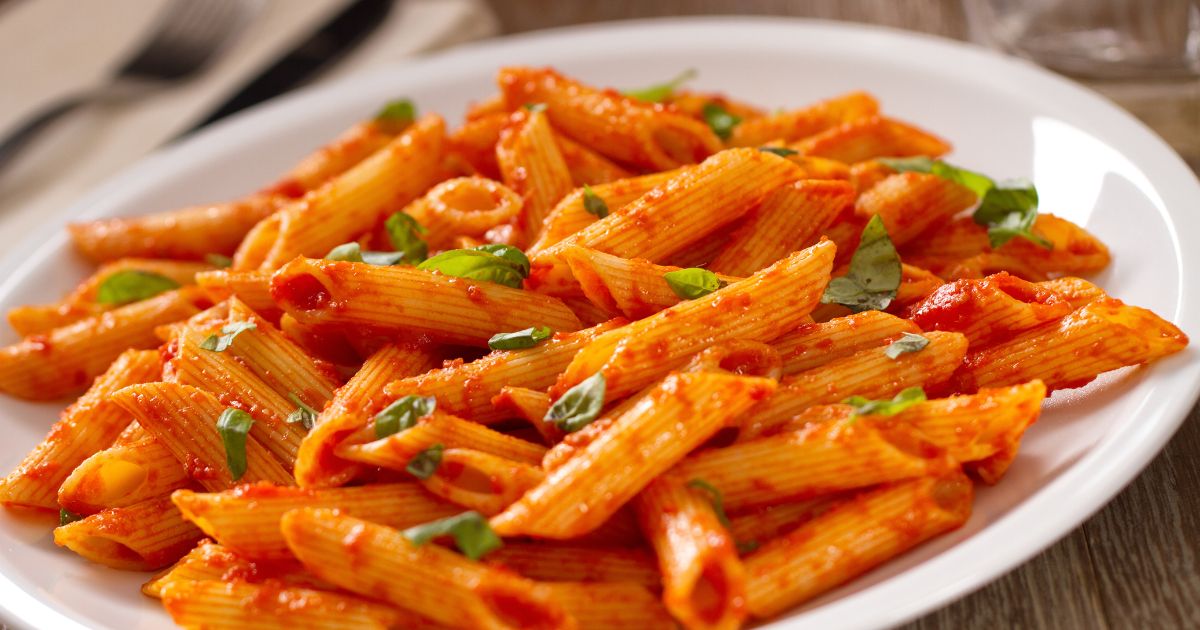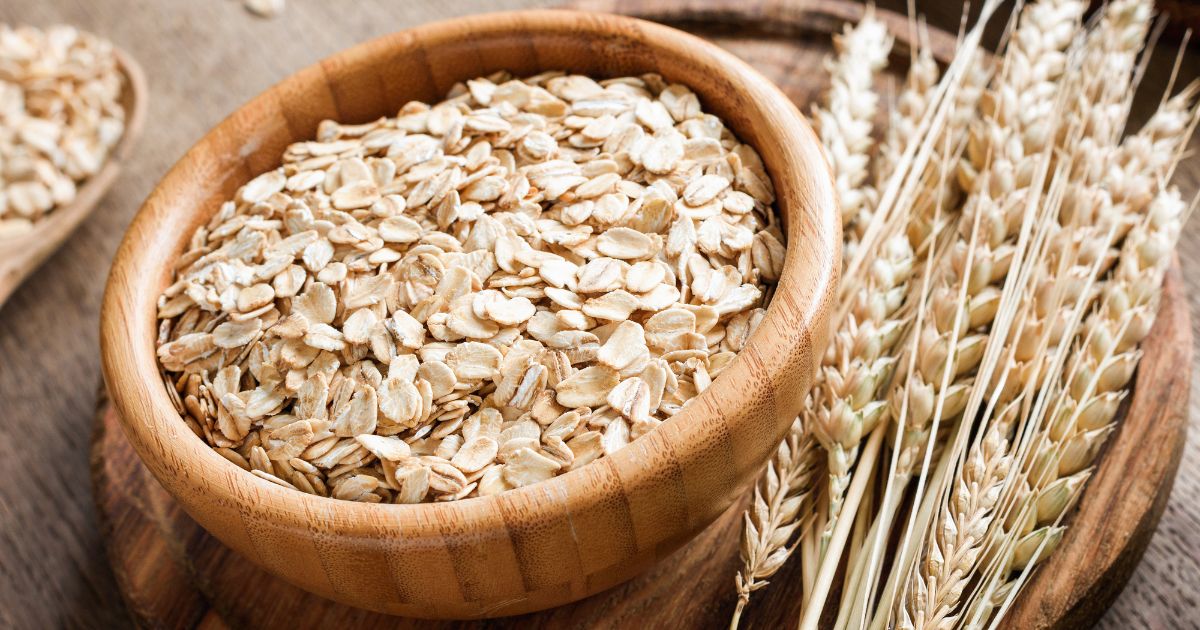The ketogenic diet, also known simply as “keto,” is a low-carbohydrate, high-fat diet that has become popular for weight loss and health benefits. The diet focuses on drastically reducing carbohydrate intake and replacing it with fat. This reduction in carbs puts the body into a metabolic state called ketosis.
When you drastically reduce your carbohydrate intake, your body enters ketosis. In ketosis, your body burns ketones derived from fat for energy instead of glucose from carbohydrates. As a result, you tend to lose weight quickly in the initial stages of the keto diet.
Keto diets originated as a therapeutic diet for children with severe epilepsy. In the 1920s, researchers found that fasting helped reduce seizures in patients with epilepsy. They eventually determined a strict low-carbohydrate diet high in fat mimics the metabolic effects of fasting and can reduce seizures in epileptic patients. The “classic” ketogenic diet used for epilepsy patients restricts protein as well as carbs to maximize ketone production. However, modern keto diets tend to allow more protein.
In recent years, the keto diet has become a mainstream dietary strategy for weight loss, diabetes, neurological diseases, and athletic performance. Advocates argue the keto diet provides better appetite control, increased energy, and numerous health benefits compared to higher-carb diets. However, the diet remains controversial among health professionals due to concerns about its restrictive nature, sustainability, and side effects.
How Does the Keto Diet Work?
The keto diet works by putting your body into a metabolic state called ketosis. This is when your body switches from burning carbohydrates for energy to burning fats.
On a normal diet, the body breaks down carbohydrates into glucose which is used for energy. Glucose is the easiest molecule for the body to convert and use as energy so our cells prefer it. However, the majority of people eat way more carbohydrates than they need. The excess carbohydrates are stored as fat.
On the keto diet, by reducing carb intake drastically, the body lacks the glucose for energy. Without enough glucose for energy, the body enters ketosis which forces the body to burn stored fat instead of carbs.
The liver converts fat into fatty acids and ketone bodies which can be used as energy. This process of breaking down fat for energy instead of carbs produces ketones. Burning ketones for energy instead of glucose puts your body into a metabolic state known as ketosis.
When in ketosis, you may experience benefits like. Free keto diet plan
Stable energy levels – Ketones provide a steady source of energy since they are produced by the breakdown of fat in the liver. This avoids energy crashes from fluctuating blood sugar levels.
Appetite suppression – Ketosis suppresses appetite by reducing hunger hormones like ghrelin. Since
you feel full for longer, calorie intake decreases naturally without feelings of restriction.
Improved focus and concentration – With stable energy from ketones, mental clarity and focus often improve. Many report a reduction in brain fog as well.
Fat loss – Ketosis encourages the body to burn fat stores for energy rather than carbs. This leads to fast weight and fat loss, especially around the midsection.
The keto diet is designed to keep carb intake low enough to induce this fat-burning state of ketosis. This metabolic shift is the key reason why keto is such an effective weight-loss diet.
Foods to Eat on Keto
The keto diet emphasizes high fat, moderate protein, and very low carb intake. Here are some of the top foods to enjoy on keto:
Meats
- Beef – Steaks, roasts, ground beef
- Pork – Bacon, sausage, chops, tenderloin
- Chicken
- Turkey
- Lamb
Choose fattier cuts of meat whenever possible.
Fish and Seafood
- Salmon
- Trout
- Tuna
- Shellfish – Shrimp, crab, lobster
- Fish roe
Be sure to eat fatty fish like salmon to get your omega-3s in.
Eggs
- Chicken eggs
- Duck eggs
- Quail eggs
Eggs are a versatile and nutrient-dense keto superfood. Enjoy them cooked anyway.
Healthy Fats
- Olive oil
- Coconut oil
- Avocado oil
- Ghee
- Butter
- Lard
Tallow
Load up on healthy saturated and monounsaturated fats. Stay away from processed vegetable and seed oils.
Low Carb Vegetables
- Leafy greens – Spinach, kale, lettuce
- Broccoli and cauliflower
- Asparagus
- Celery
- Cucumber
- Mushrooms
- Peppers
- Onions
- Tomatoes
- Brussels sprouts
Stick to above-ground veggies, ideally those that grow above-ground. Avoid starchy veggies like potatoes.
Dairy
- Greek yogurt
- Cottage cheese
- Hard cheeses – cheddar, parmesan, swiss
- Heavy cream
- Sour cream
Opt for full-fat dairy products, preferably from grass-fed cows if you can find them. Limit milk consumption.
Foods to Avoid on Keto
When following a ketogenic diet, there are certain foods you’ll want to avoid since they are high in carbohydrates. Restricting carbs allows your body to enter ketosis. Here are some of the main foods to avoid on keto:
Sugary Foods: Foods high in sugar will spike your blood sugar and insulin, taking you out of ketosis. Avoid sugary foods like soda, juice, candy, ice cream, syrups, and baked goods like cakes, cookies and donuts. Read nutrition labels and avoid products with added sugars.
Grains: Grains are very high in carbs, so they are restricted to keto. Avoid foods made with wheat, rice, oats, corn, and barley. Some examples are bread, pasta, oatmeal, rice, cereal, tortillas, and pizza crust. Look for low-carb alternatives made with almond or coconut flour instead.
Starchy Vegetables: Starchier veggies like potatoes, sweet potatoes, peas, parsnips, and butternut squash are too high in carbs for keto. Opt for low-starch veggies instead like leafy greens, broccoli, cauliflower, asparagus, peppers, mushrooms, and others.
Fruits: Most fruits contain natural sugars so they are limited on keto. Berries can be enjoyed in moderation, but avoid high-sugar fruits like bananas, mangos, grapes, pineapple, and oranges. Be mindful of portions with lower glycemic fruits like apples and pears as well.
Beans and Legumes: Beans, lentils, and other legumes are too high in carbs and should be avoided. This includes foods like chickpeas, kidney beans, black beans, baked beans, lentils, and more.
Unhealthy Fats Not all fats can be enjoyed freely on keto. Avoid trans fats, hydrogenated oils, and high omega-6 vegetable oils like soybean, cottonseed, and canola oil. Opt for healthier fats instead like olive oil, coconut oil, avocados, nuts, seeds, and wild-caught fish.
By avoiding these high-carb foods, you can stay in ketosis and experience the benefits of the keto diet like accelerated fat burning, weight loss, more energy, and better health. Just be sure to replace these foods with low-carb, high-fat alternatives that fit your macros.
Keto Diet Benefits
The keto diet provides several impressive health benefits. Here are some of the top reasons people choose to follow this low-carb, high-fat diet:
Weight Loss
One of the main reasons people start a keto diet is to lose weight. By drastically reducing carbs and limiting protein intake, your body enters a metabolic state called ketosis. In this state, your body becomes incredibly efficient at burning fat for energy. Numerous studies show that keto is much more effective for weight loss than a standard low-fat diet.
In one study, overweight participants were randomized to follow either a low-fat or low-carb diet. After 6 months, the low-carb group lost 3 times more weight than the low-fat group. Other studies show similar impressive results, with low-carb dieters losing up to 3 times as much weight as those following diets low in fat.[[3]]
Reduced Hunger
Many people experience a dramatic reduction in hunger and appetite on the keto diet. This is likely due to ketosis and the increased intake of fat and protein, which are very filling nutrients.[[4]]
Decreased hunger makes it much easier to reduce calorie intake and lose weight. For this reason, the keto diet is linked to a reduced desire to eat.
Following keto may suppress the hunger hormone ghrelin, which could explain this effect.
Improved Health Markers
The keto diet has been shown to have many benefits for health markers like blood sugar, heart disease risk factors, and others:
Improved insulin sensitivity and blood sugar control.
This may help protect against type 2 diabetes.
Decreased LDL cholesterol, blood triglycerides, and blood pressure.
This should lower heart disease risk.
Increased HDL cholesterol.
HDL is protective against heart disease.
The keto diet may also improve symptoms of health conditions like metabolic syndrome, polycystic ovary syndrome (PCOS), and neurological conditions like Alzheimer’s and Parkinson’s.
Mental Clarity
By providing ketones as an alternative fuel source for the brain, the keto diet can lead to increased mental focus and clarity.
People report being able to think more clearly without the brain fog caused by fluctuating blood sugars.
Keto may also help conditions like depression, autism, epilepsy, and Alzheimer’s by improving brain health and function.
Keto Diet Side Effects
Transitioning to a keto diet can result in some temporary side effects as your body adjusts. These side effects can include:
Keto Flu
The “keto flu” refers to flu-like symptoms that some people experience when first starting a keto diet. As your body adapts to using ketones and fatty acids for energy instead of glucose, you may experience symptoms like fatigue, headaches, nausea, dizziness, insomnia, and brain fog. These symptoms are usually temporary and tend to resolve within a few days or weeks as your body acclimates to ketosis. Staying hydrated, getting enough rest, and supplementing with electrolytes can help mitigate symptoms of the keto flu.
Electrolyte Imbalance
The keto diet causes a diuretic effect, meaning you tend to excrete more fluid and electrolytes like sodium, potassium, and magnesium. This fluid loss coupled with restricted carb intake can result in low electrolyte levels. Symptoms of an electrolyte imbalance include headaches, muscle cramps, fatigue, dizziness, and constipation. Drinking bone broth, taking electrolyte supplements, and consuming enough salt can prevent electrolyte deficiency on keto.
Constipation
Constipation is a common complaint among those starting a keto diet. This is due to several factors like inadequate hydration, electrolyte imbalance, and reduced fiber intake from restricting carbs.
Ways to alleviate constipation on keto include drinking plenty of fluids, eating more non-starchy vegetables, supplementing with magnesium, incorporating probiotics, and exercising regularly. Over time, your digestive system tends to adapt to the keto diet.
Nutrient Deficiencies
The keto diet eliminates many nutrient-rich food groups like fruits, grains, and legumes. This increases the risk for potential nutritional deficiencies if care isn’t taken to eat a variety of foods and veggies on keto. Nutrients that may need special attention on keto include fiber, magnesium, potassium, folate, and vitamins C and K. Taking a general multivitamin can help fill any potential gaps in nutrition.
Overall, these temporary side effects are usually mild and worth it for the long-term health benefits of keto. With proper preparation, supplementation, and diet adjustment, these side effects can be reduced or avoided completely.
Keto Diet Meal Plan Ideas
Following a keto diet meal plan is key to success. Having sample daily meal plans, recipes, and shopping lists can help take the thinking out of eating keto. Here are some keto diet meal ideas to get you started:
Sample Keto Meal Plan
A sample daily keto meal plan may look like this:
– Breakfast: Eggs fried in olive oil with sauteed spinach and avocado
– Lunch: Bunless burger (beef patty and cheese) served with a green salad and oil and vinegar dressing
– Dinner: Chicken thighs baked with lemon and herbs served with non-starchy roasted vegetables like broccoli, cauliflower and Brussels sprouts
– Snacks: Raw nuts and seeds, celery sticks with nut butter, berries
Focus on getting adequate protein and healthy fats at each meal. Stay below 20-30g net carbs per day. Drink plenty of water.
Go-To Keto Recipes
These keto-friendly recipes can help simplify meal planning:
– Breakfast: Bacon and egg “muffins”, keto yogurt with berries, keto granola
– Lunch: Tuna salad wrapped in lettuce leaves, chicken zoodle soup, egg salad stuffed avocado – Dinner: Bunless bacon cheeseburger, chicken fajitas with sautéed peppers and onion, zucchini lasagna
– Snacks: Chia seed pudding, avocado chocolate mousse, seed crackers with almond butter
Search for keto recipes online or purchase a keto cookbook for more ideas. Focus on recipes with whole food ingredients.
Keto Grocery List
Stock up on these keto-approved foods:
– Protein: Eggs, beef, pork, chicken, turkey, fish, shellfish
– Non-starchy vegetables: Leafy greens, broccoli, cauliflower, asparagus, peppers, etc. – Healthy fats: Olive oil, coconut oil, avocado oil, ghee, nuts, seeds
– Dairy: Full-fat cheese, plain Greek yogurt, heavy cream
– Berries: In moderation
Shop the perimeter of the grocery store and avoid the inner aisles filled with processed carbs and foods. Planning helps you stick to the keto diet long-term.
Tips for Starting the Keto Diet
The keto diet requires making a significant shift in your daily eating habits. Here are some helpful tips to ease into keto:
Transition gradually: Going full keto overnight can be challenging. Try incrementally reducing carbs and adding more fat over a week or two to give your body time to adapt. This will minimize side effects like keto flu.
Calculate your macros: Determine your ideal ratios for fat, protein, and carbs based on your weight, activity level, and goals. Tracking macros helps ensure you’re in ketosis. Many apps and online calculators can provide your macro targets.
Stock up on keto foods: Throw out ultra-processed carbs and load up your kitchen with keto staples like eggs, avocados, olive oil, nuts, seeds, and leafy greens. Having the right foods on hand makes keto convenient.
Supplement if needed: Adding a magnesium, sodium, and potassium supplement can help reduce keto flu symptoms like cramps, fatigue, and headaches as your body adapts to ketosis. MCT or exogenous ketone supplements may also help boost ketone levels.
Drink lots of water: Staying well hydrated is crucial on keto to flush out excess ketones and minimize side effects. Aim for at least 2-3 liters of water per day. Adding electrolytes can also help replenish mineral losses from increased urination.
Monitor ketones: Testing your blood, breath, or urine ketone levels, especially when starting, can confirm you’ve achieved ketosis. Ketone measurements also help gauge the impact of different foods.
Be patient: It can take a few weeks to become fully keto-adapted as your body learns to utilize fat effectively. Give your body time to adjust before making any judgments about energy, appetite, or weight changes.
Easing into the keto diet, tracking diligently, and supplementing key nutrients sets you up for
success. Pay close attention to your body and be prepared to make tweaks until you find your optimal keto approach.
Is the Keto Diet Safe Long-Term?
The keto diet is safe for most people in the short term, with potential benefits for weight loss, diabetes, and other health conditions. However, there are some concerns to consider for long-term adherence to a strict keto diet.
Potential concerns with long-term keto:
Nutrient deficiencies – Restricting carbs long-term may increase the risk of deficiencies in certain nutrients like magnesium, potassium, folate, vitamin C, and fiber. Supplements can help.
Disordered eating – Due to its restrictive nature, keto may worsen tendencies toward disordered eating in some people. Moderation and medical guidance are key.
Liver and kidney issues – Very high fat intake could potentially strain the liver and kidneys. Those with liver or kidney conditions should consult a doctor before trying keto.
Sustainability – Strict keto can be hard to stick to long-term due to restrictions. Less restrictive forms like cyclical keto may be more sustainable.
Side effects – Some experience side effects like fatigue, nausea, constipation, and headaches. These often subside, but should be monitored.
Moderation is important even if following keto long-term. Allowing some carbs from nutrient-dense sources now and then can help mitigate potential nutrient deficiencies and support sustainability. Like any restrictive diet, keto requires monitoring from a healthcare professional.
The bottom line is keto can be safe for extended periods with proper precautions. Adjustments to less restrictive forms may support long-term adherence. As with any major dietary change, working with a knowledgeable practitioner is advised.
The Bottom Line
When done right, the keto diet can be an effective tool for fast weight loss and other health benefits like lower blood pressure and blood sugar. However, it does require discipline to stick to the high-fat, low-carb regimen. Make sure to eat plenty of low-carb veggies and high-quality fats from sources like avocado, olive oil, fish, and nuts. Avoid highly processed keto products and supplements.
The keto diet works by putting your body into nutritional ketosis, which causes you to burn fat for fuel instead of carbs. This can lead to rapid weight loss, but only if you stay in ketosis by keeping net carbs under 20-50g per day. Be aware that the keto flu is common when transitioning to this low-carb way of eating.
For best and sustainable results, make the keto diet a lifestyle and not just a short-term diet. Pair keto with intermittent fasting, stress management, and regular exercise for optimal health. Work closely with a doctor to ensure the diet is safe for your health status and needs. With diligence and
patience, keto can be an effective tool for weight loss, just be sure to do it the healthy way.




